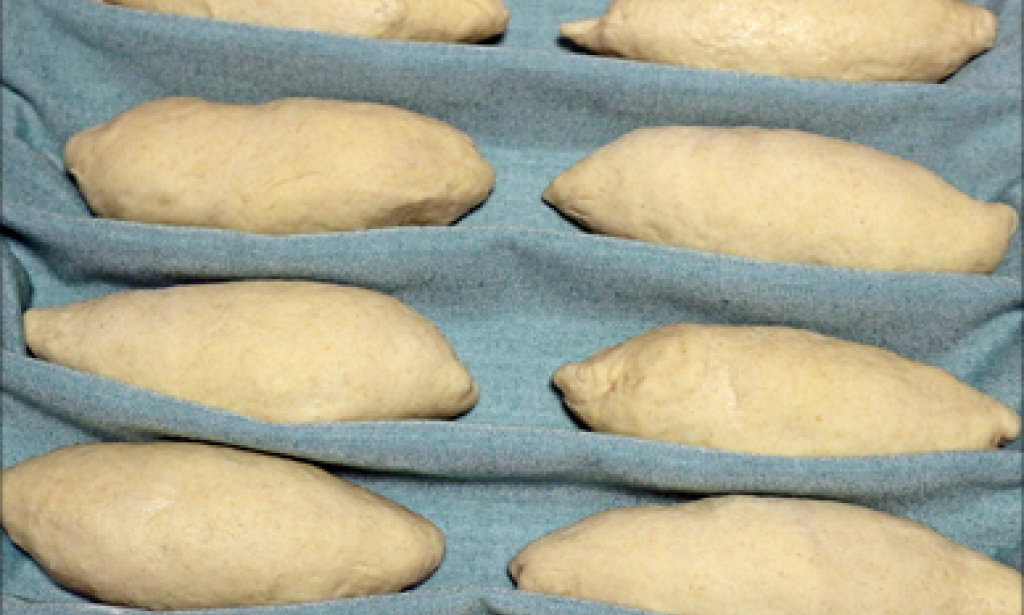Methods of making pastrie

Technical terms from the bakery trade
Here I show you an overview of the most important, common technical terms from the bakery trade, which appear again and again in recipes or when baking bread
scrape off
Smearing means smearing with liquid. Bread or rolls can be brushed with different liquids (e.g. water, cream, milk, beer, starch mixture, egg, etc.) either shortly before baking or directly after baking. This way they get a nice shiny and tasty crust. For this you usually use the brown wipe, a large pastry brush
stale bread
When stale bread is mentioned in recipes, it can be either ground bread (breadcrumbs) or dried bread. You can prepare it as a swelling piece with liquid or add it to pre-doughs as crumbs. This gives the bread more flavor and a longer shelf life. It's also a wonderful way to use up stale bread. I toast old dried bread in the oven and grind it into crumbs. So I always have a ready supply that I can use as a source piece.
Caking

The first baking of bread at a very high temperature. At the beginning, the bread is always put into the oven at the highest possible temperature (the baking temperature) (this applies to common ovens and is around 240-280 degrees)
Anstellgut (ASG)
You only have to make sourdough once. Then you can always put some leftovers in the fridge and keep them there until the next time you bake them, this part is called ASG / Anstellgut. A new sourdough can then be prepared from the ASG one day before the baking day.
refresh
The starter for sourdough (ASG) is stored in the refrigerator. If ASG is stored in the refrigerator for a longer period of time without further use, it should be refreshed after 1-2 weeks with 1 teaspoon of flour and a little water.
processing of the dough
Shape the dough.
Paragon

In recipes, the dough is often referred to as a bunch. This involves tearing open the crust, which is done by cutting in the appropriate places or by letting it open accidentally.
autolysis
A kind of pre-dough made from water and flour. Flour and water are mixed and left at room temperature for up to an hour or more. The gluten strands connect better this way. An autolytic dough improves taste, volume and crust. In addition, the dough does not have to be kneaded for as long.
Baker's linen or dough towels
Baker's linen is a special cloth that is used to stabilize dough pieces (especially rolls and baguettes). They prevent the dough piece from spreading. I also use these towels to cover the bread or rolls while walking.
baking malt
Malt flour is a good way to give bread and rolls a great crust, make them crispier and improve the crumb. There are enzyme-active flours that are used for wheat-heavy breads (with rye they would tend to worsen the result) and non-enzyme-active baking malt for rye breads. It is made from spelt, wheat, barley or rye. The grain is germinated by moisture and then dried and roasted. The non-enzyme active baking malt is easy to make yourself (instructions here).
Biga
Biga is a fairly firm pre-dough that is often used in Italy for ciabatta or pizza, but is also very good for rolls or bread. This gives dough a better aroma and stays fresh for longer. For a Biga, use water and flour in a ratio of 1:2 and 1% fresh yeast (e.g. 50 g water, 100 g wheat flour, 1 g yeast).
pretzel eye
To make pretzels, you need pretzels. This can be made from either baking soda or lye pearls. You can get baking soda everywhere, but the result won't be as good as with lye pearls.
For a sodium hydroxide solution, boil 1 l of water with 50 g of baking soda, set the pot aside for 10 minutes until the solution has cooled down a bit but is still quite hot. The dough pieces are then left to stand for 30 seconds and then placed back on the tray.
When using lye pearls, take 1 liter of lukewarm water and put it in a saucepan. There are also 35 g of lye pearls, which are stirred in carefully. Wear latex gloves and an apron at all times when working, the lye is caustic. Put the dough pieces in the lye and leave them there for 5-10 seconds. Take out and put back on the sheet.
I recommend pretzel pearls for pretzels because the result is much better. The baked goods get a nice dark lye color and, above all, the typical lye taste, neither of which is the case with baking soda to the same extent.
scallop
Grain meal, seeds, stale bread or flour is poured over with boiling water and left to stand for at least 12 hours. This brings more moisture into the dough.
stretching and folding
You often read this term in bread recipes that are wheat-heavy, in English (or in German recipes) there is often talk of stretch and fold. There are different methods, depending on how soft or firm the dough is. Firmer doughs can simply be shaped into a patty (round or square) and then folded either all around or inwards from the corners. Softer dough is best placed in an oiled pan or bowl and pulled up on one end to be placed over the rest of the dough. This can then be done multiple times from all sides.

يجب عليك تسجيل الدخول لتستطيع كتابة تعليق